Katrina Follow-Up
By Dr. Mehmet Oz
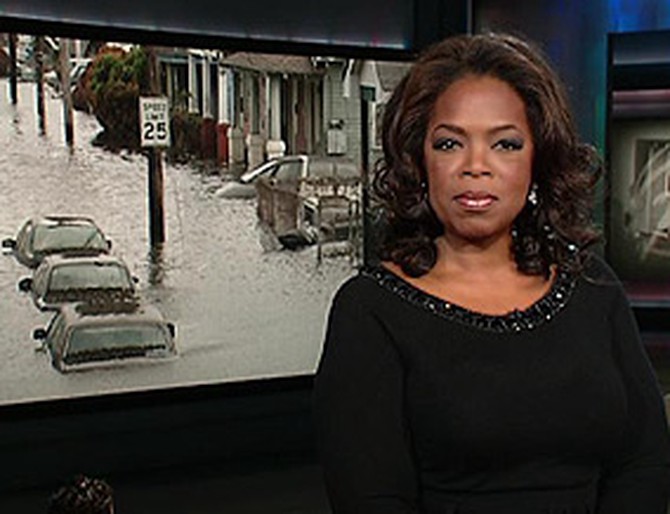
In August 2005, the world watched as Hurricane Katrina swept ashore and wrecked havoc on the Gulf Coast. Millions lost their homes, and more than 1,000 lost their lives.
It's been two years since the wind and rain subsided, but the storm rages on. The Washington Post reports that the suicide rate in New Orleans has skyrocketed 300 percent, and the murder rate is spiraling out of control.
Two years ago, CNN's Anderson Cooper reported from the devastation as a special Oprah Show correspondent. Now, he returns to the Gulf Coast to make good on a promise he made to those who survived America's worst natural disaster.
It's been two years since the wind and rain subsided, but the storm rages on. The Washington Post reports that the suicide rate in New Orleans has skyrocketed 300 percent, and the murder rate is spiraling out of control.
Two years ago, CNN's Anderson Cooper reported from the devastation as a special Oprah Show correspondent. Now, he returns to the Gulf Coast to make good on a promise he made to those who survived America's worst natural disaster.
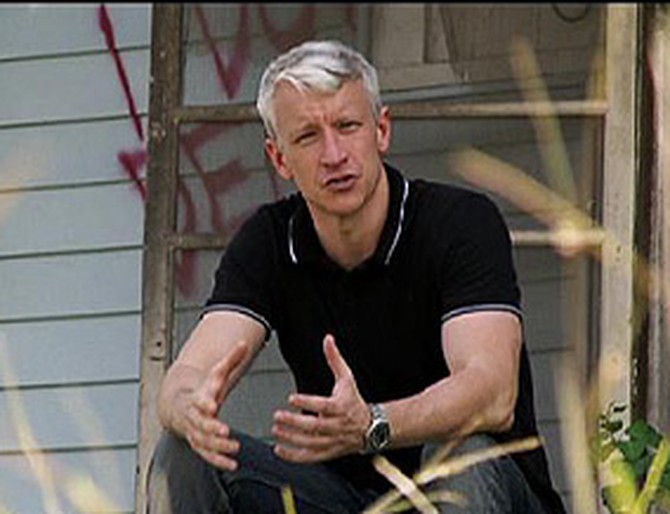
For the past two years, Anderson says he's returned to the Gulf Coast almost every month to report on the challenges facing hurricane survivors. "I made a promise to keep coming back here," he says. "[And] while there has been progress in New Orleans, it hasn't come fast enough by any measure."
In New Orleans's famous French Quarter, shops and restaurants are back in business...but not every neighborhood has been so lucky. Anderson returns to the Lower Ninth Ward, an area that was practically swept away by Katrina's flood waters. "The Lower Ninth Ward [is] where we saw so many of the scenes of just utter horror two years ago," Anderson says. "This is where we saw so many bodies just floating in the streets."
Despite promises to rebuild, Anderson says the neighborhood is still a wasteland. "If the miles of destroyed homes, businesses and the FEMA trailers don't tell you the full story, [there are] some cold, hard facts that will," he says.
According to Anderson, only about 60 percent of the pre-Katrina population has returned to New Orleans, and more than 14,000 families still live in Federal Emergency Management Agency (FEMA) trailers. Those who have moved back must deal with rampant crime—FBI statistics show that the murder rate in New Orleans is now the highest in the nation.
"I've walked down the streets here in New Orleans that I was literally floating down two years ago in a boat," Anderson says. "I don't want people to forget what they saw here those terrible days after the storm. I don't want people to just move on and not remember."
In New Orleans's famous French Quarter, shops and restaurants are back in business...but not every neighborhood has been so lucky. Anderson returns to the Lower Ninth Ward, an area that was practically swept away by Katrina's flood waters. "The Lower Ninth Ward [is] where we saw so many of the scenes of just utter horror two years ago," Anderson says. "This is where we saw so many bodies just floating in the streets."
Despite promises to rebuild, Anderson says the neighborhood is still a wasteland. "If the miles of destroyed homes, businesses and the FEMA trailers don't tell you the full story, [there are] some cold, hard facts that will," he says.
According to Anderson, only about 60 percent of the pre-Katrina population has returned to New Orleans, and more than 14,000 families still live in Federal Emergency Management Agency (FEMA) trailers. Those who have moved back must deal with rampant crime—FBI statistics show that the murder rate in New Orleans is now the highest in the nation.
"I've walked down the streets here in New Orleans that I was literally floating down two years ago in a boat," Anderson says. "I don't want people to forget what they saw here those terrible days after the storm. I don't want people to just move on and not remember."
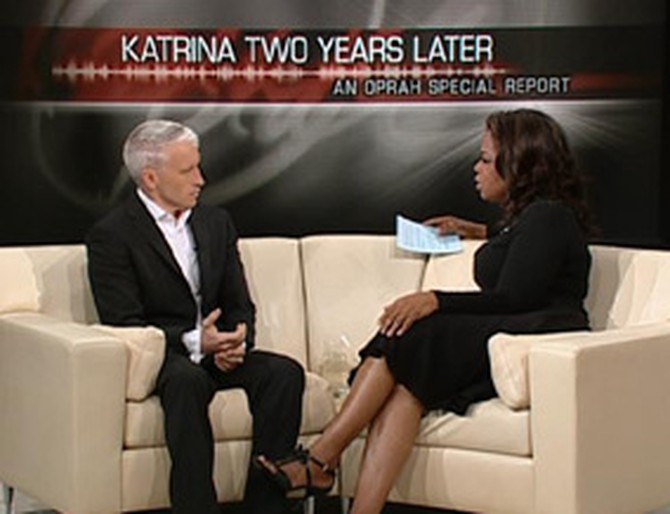
As a CNN reporter, Anderson has covered natural disasters and tragedies around the world, but he says he stuck with the Hurricane Katrina story to speak for those who didn't have a voice.
"I just don't think anybody in America should be invisible," he says. "Two years later, it seems like a lot of the country has moved on and has sort of forgotten what's still going on. For people in New Orleans and all along the Mississippi Gulf Coast, the storm winds are still blowing."
Anderson says lack of leadership at the local, state and federal level has hindered recovery efforts. "People have not been making tough decisions," he says. "The only thing that has come out of the storm is that people in the city of New Orleans have banded together. And while the government has failed, individuals have stood up."
Many storm survivors are still waiting for money to rebuild because bureaucracies have been slow in delivering the funds that were allocated, he says. "There was never a plan. There wasn't a number you could call to find out, 'Can I move back here? Can I rebuild here?'" he says. "It was left up to individuals to kind of figure out the system on their own, and that was crazy. ... Hope is not a plan."
"I just don't think anybody in America should be invisible," he says. "Two years later, it seems like a lot of the country has moved on and has sort of forgotten what's still going on. For people in New Orleans and all along the Mississippi Gulf Coast, the storm winds are still blowing."
Anderson says lack of leadership at the local, state and federal level has hindered recovery efforts. "People have not been making tough decisions," he says. "The only thing that has come out of the storm is that people in the city of New Orleans have banded together. And while the government has failed, individuals have stood up."
Many storm survivors are still waiting for money to rebuild because bureaucracies have been slow in delivering the funds that were allocated, he says. "There was never a plan. There wasn't a number you could call to find out, 'Can I move back here? Can I rebuild here?'" he says. "It was left up to individuals to kind of figure out the system on their own, and that was crazy. ... Hope is not a plan."
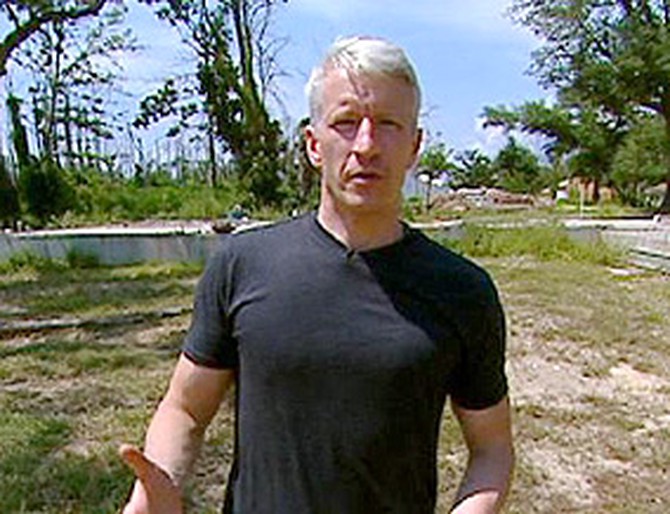
Days after Hurricane Katrina blew ashore, Anderson and Oprah's Angel Network team traveled to Waveland, Mississippi, a coastal community destroyed by the storm.
"In those dark, terrible days immediately after the storm, I saw things here which I'll certainly never forget," he says.
While in Waveland, Anderson came across unimaginable horrors, including a family of four that had drowned inside their home.
Two years later, he returns to this small Southern town to see how the community is coping. "Much of Waveland has started to rebuild," he says. "There is progress here."
Businesses have reopened, but many of the customers have yet to return. According to Anderson, only 60 percent of Waveland's population has moved back. "A lot of the folks [in south Waveland], nearest the water, haven't been able to rebuild because they haven't been able to get reimbursements from their insurance companies," he says.
Why should every American care about what's going on in these communities? "This is a test case. This is going to happen again. There's going to be another storm. There's going to be a terrorist attack. There's going to be something," Anderson says. "How we are treating the people there now, in Mississippi and New Orleans, is how we all will be treated the next time around. Is this really the way we would want to be treated? There's no doubt that the answer is no."
"In those dark, terrible days immediately after the storm, I saw things here which I'll certainly never forget," he says.
While in Waveland, Anderson came across unimaginable horrors, including a family of four that had drowned inside their home.
Two years later, he returns to this small Southern town to see how the community is coping. "Much of Waveland has started to rebuild," he says. "There is progress here."
Businesses have reopened, but many of the customers have yet to return. According to Anderson, only 60 percent of Waveland's population has moved back. "A lot of the folks [in south Waveland], nearest the water, haven't been able to rebuild because they haven't been able to get reimbursements from their insurance companies," he says.
Why should every American care about what's going on in these communities? "This is a test case. This is going to happen again. There's going to be another storm. There's going to be a terrorist attack. There's going to be something," Anderson says. "How we are treating the people there now, in Mississippi and New Orleans, is how we all will be treated the next time around. Is this really the way we would want to be treated? There's no doubt that the answer is no."
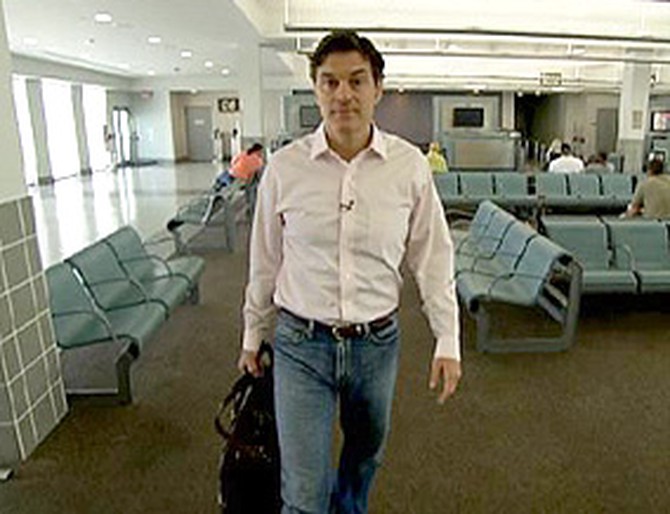
When The Oprah Show went to New Orleans in 2005, Dr. Mehmet Oz was one of the first from the Angel Network team to arrive on the scene.
With most of the hospitals evacuated, Dr. Oz headed to the Louis Armstrong International Airport, where most of the injured were being treated in makeshift clinics. There, Dr. Oz was unprepared for what he saw: thousands of sick and injured survivors, many who had gone days without food or water, patiently awaiting treatment.
Now, Dr. Oz returns to the airport—a place that's haunted him for two years. "I saw things that I never imagined, and I'm a heart surgeon," he says. "It changed my life. ... I'll never forget the makeshift morgue, and sadly, those who took their last breaths alone."
Although the airport has returned to normal, Dr. Oz says there are still more than 100 bodies in a New Orleans morgue that lay unclaimed.
That's not the only problem...Dr. Oz says New Orleans is in the middle of a crippling healthcare crisis.
With most of the hospitals evacuated, Dr. Oz headed to the Louis Armstrong International Airport, where most of the injured were being treated in makeshift clinics. There, Dr. Oz was unprepared for what he saw: thousands of sick and injured survivors, many who had gone days without food or water, patiently awaiting treatment.
Now, Dr. Oz returns to the airport—a place that's haunted him for two years. "I saw things that I never imagined, and I'm a heart surgeon," he says. "It changed my life. ... I'll never forget the makeshift morgue, and sadly, those who took their last breaths alone."
Although the airport has returned to normal, Dr. Oz says there are still more than 100 bodies in a New Orleans morgue that lay unclaimed.
That's not the only problem...Dr. Oz says New Orleans is in the middle of a crippling healthcare crisis.
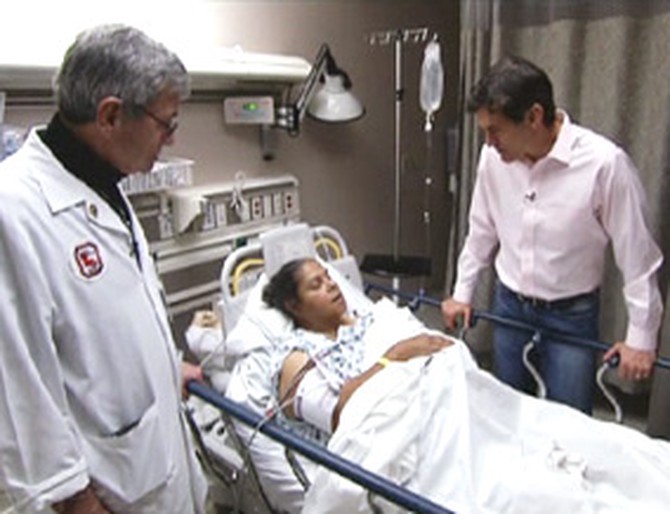
As the floodwaters of Hurricane Katrina subsided, many of the desperately needed medical services were washed away with them. Before the storm, there were seven hospitals in operation in New Orleans. Now, the New Orleans Health Department says there are only three. The storm displaced nearly 4,500 doctors in the city, and approximately half of them had not returned by August 2007.
"We just don't have the hospital beds. We don't have the doctors. We don't have the nurses. We don't have the clinics," says New Orleans health director Dr. Kevin Stephens.
Among the facilities in New Orleans that have remained closed since the hurricane is Charity Hospital, which once helped patients without insurance. Now, those without medical insurance—an overwhelming 98,000 people—must go to University Hospital, a facility with only 179 staffed beds.
The situation in Mississippi isn't much better. Dalwin Cuevas, a 41-year-old construction worker, says he is unemployed due to his illness. "I go to the hospital and the doctors turn me away. I don't have insurance," he says. "I lay here in this camper until my kidneys shut down and then they [have] to keep me in the hospital."
In the face of these hardships, some residents don't seek medical help at all—and doctors say the breakdown in the system has led to grave consequences. Since Hurricane Katrina, the death rate in New Orleans has risen 50 percent.
"We just don't have the hospital beds. We don't have the doctors. We don't have the nurses. We don't have the clinics," says New Orleans health director Dr. Kevin Stephens.
Among the facilities in New Orleans that have remained closed since the hurricane is Charity Hospital, which once helped patients without insurance. Now, those without medical insurance—an overwhelming 98,000 people—must go to University Hospital, a facility with only 179 staffed beds.
The situation in Mississippi isn't much better. Dalwin Cuevas, a 41-year-old construction worker, says he is unemployed due to his illness. "I go to the hospital and the doctors turn me away. I don't have insurance," he says. "I lay here in this camper until my kidneys shut down and then they [have] to keep me in the hospital."
In the face of these hardships, some residents don't seek medical help at all—and doctors say the breakdown in the system has led to grave consequences. Since Hurricane Katrina, the death rate in New Orleans has risen 50 percent.
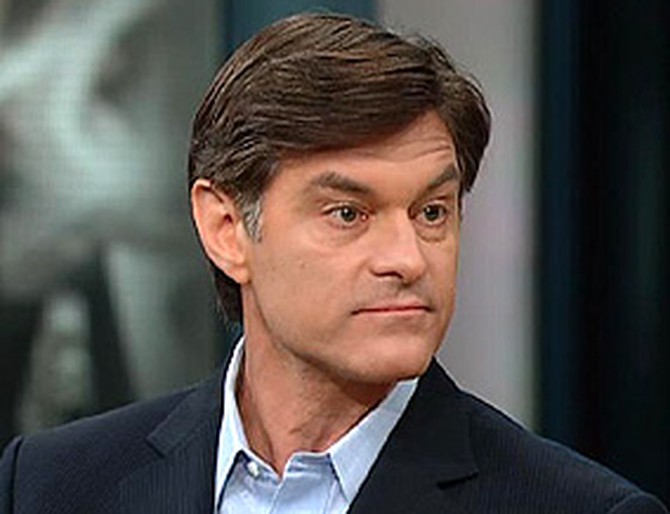
Dr. Oz says that many people in New Orleans go to emergency rooms for their primary medical care, waiting in line for hours—sometimes days—to see a doctor. "It doesn't work. That's not a way to get healthcare, because it's an expensive, very inefficient way of getting care," he says.
This breakdown in the healthcare system, Dr. Oz says, is "mortgaging the future" of the residents. "If you're not getting the appropriate care—especially for the young ones in our society—then you will be paying that price for generations to come."
Dr. Oz says it's important for Americans to be aware of what's going on in New Orleans because it can affect anyone. "If you're sitting at home and think this isn't about you, believe me, what you're seeing in New Orleans is how this country will respond to a natural disaster in your community," he says. "This is about all of us and it's about now. This is a litmus test for our nation."
This breakdown in the healthcare system, Dr. Oz says, is "mortgaging the future" of the residents. "If you're not getting the appropriate care—especially for the young ones in our society—then you will be paying that price for generations to come."
Dr. Oz says it's important for Americans to be aware of what's going on in New Orleans because it can affect anyone. "If you're sitting at home and think this isn't about you, believe me, what you're seeing in New Orleans is how this country will respond to a natural disaster in your community," he says. "This is about all of us and it's about now. This is a litmus test for our nation."
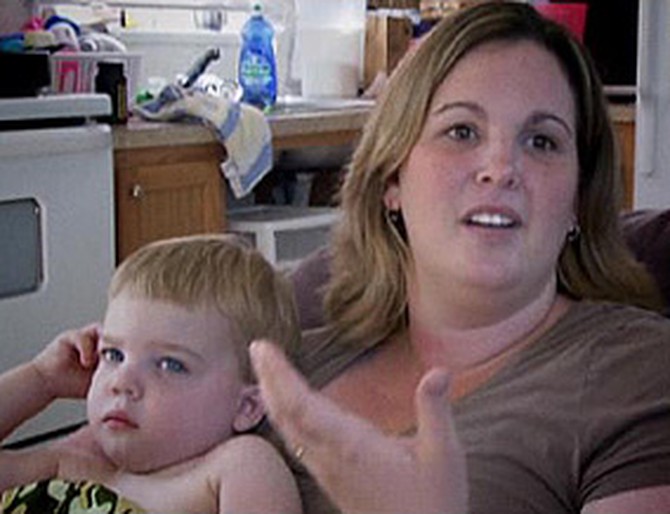
Like 26,000 other displaced families, Lindsay and Steven Huckabee are still living in the FEMA provided trailers—and they are making the family sick. For two years, the Huckabees and their five children have suffered several health problems. The kids have had nosebleeds, sinus infections, and four of the five have been hospitalized. Lindsay suffers constant migraines, and Steven has developed a mysterious mouth tumor.
Steven's doctor suspects that elevated levels of formaldehyde—which is in the particle boards used to build the trailers—may be causing these problems. "Our FEMA trailer tested over 20 times what is acceptable for families to live in," Lindsay says.
The Huckabees' 18-month-old son, Michael, was born prematurely shortly after they moved into the trailer. "Michael has had so many problems from the formaldehyde that he has to take breathing treatments once a day," Steven says.
In July 2007, Lindsay took her story to Capitol Hill, where she testified before Congress. At the hearing, FEMA administrator David Paulison said, "We recognize now that we have an issue. We are dealing with it in the best manner we can."
In response to residents' complaints of illnesses, FEMA began moving 140 families out of the trailers in August 2007.
Steven's doctor suspects that elevated levels of formaldehyde—which is in the particle boards used to build the trailers—may be causing these problems. "Our FEMA trailer tested over 20 times what is acceptable for families to live in," Lindsay says.
The Huckabees' 18-month-old son, Michael, was born prematurely shortly after they moved into the trailer. "Michael has had so many problems from the formaldehyde that he has to take breathing treatments once a day," Steven says.
In July 2007, Lindsay took her story to Capitol Hill, where she testified before Congress. At the hearing, FEMA administrator David Paulison said, "We recognize now that we have an issue. We are dealing with it in the best manner we can."
In response to residents' complaints of illnesses, FEMA began moving 140 families out of the trailers in August 2007.
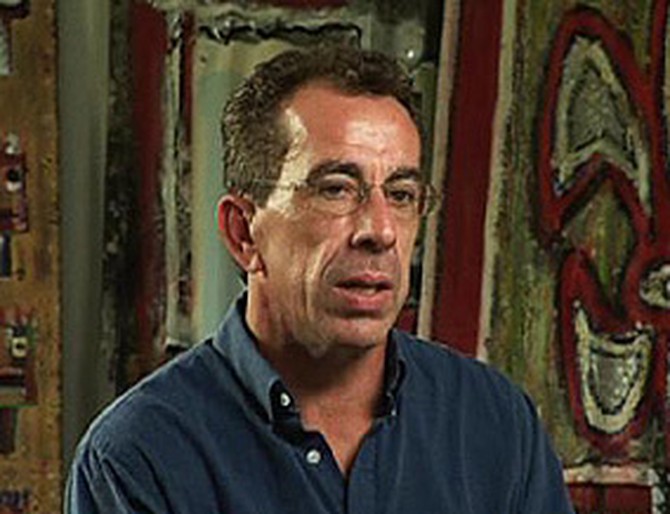
Although the hurricane itself dissolved two years ago, the storm is still raging inside the minds of people who lived through it. Studies show alarming increases of depression, anxiety, divorce, domestic abuse and drug use among hurricane survivors of every socioeconomic class.
According to medical reports, at least 20 percent of the population is suffering from delayed post-traumatic stress disorder. Locals have even come up with a term for the poor memory, poor concentration and disrupted sleeping patterns they suffer—"Katrina Brain."
Chris Rose, a Pulitzer Prize-nominated columnist in New Orleans, wrote the book 1 Dead in Attic. Although he has no history of mental health problems, Chris is one of many Gulf-area residents who eventually found himself on the edge. "I've had a number of friends kill themselves since the storm. I now understood why people did such things."
Chris received psychiatric treatment, but many residents of the city are not so fortunate. According to The Journal of the American Medical Association, the number of psychiatrists in New Orleans has dropped from approximately 200 before Katrina to just around 20 in August 2007. But while the number of doctors has dramatically decreased, the need for help has not. A recent Annuals of Emergency Medicine study shows that suicide attempts in Louisiana and Mississippi FEMA parks are 79 percent above the national average.
According to medical reports, at least 20 percent of the population is suffering from delayed post-traumatic stress disorder. Locals have even come up with a term for the poor memory, poor concentration and disrupted sleeping patterns they suffer—"Katrina Brain."
Chris Rose, a Pulitzer Prize-nominated columnist in New Orleans, wrote the book 1 Dead in Attic. Although he has no history of mental health problems, Chris is one of many Gulf-area residents who eventually found himself on the edge. "I've had a number of friends kill themselves since the storm. I now understood why people did such things."
Chris received psychiatric treatment, but many residents of the city are not so fortunate. According to The Journal of the American Medical Association, the number of psychiatrists in New Orleans has dropped from approximately 200 before Katrina to just around 20 in August 2007. But while the number of doctors has dramatically decreased, the need for help has not. A recent Annuals of Emergency Medicine study shows that suicide attempts in Louisiana and Mississippi FEMA parks are 79 percent above the national average.
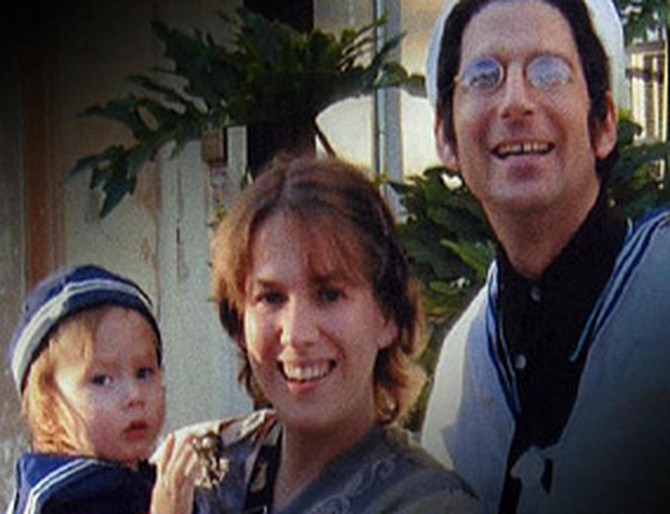
As New Orleans residents continue to battle their health problems, they also have to protect themselves from the city's crime wave. In the month of August 2007 alone, 27 have people died from shootings in New Orleans, according to police.
A vicious attack on a woman living in the city shed a harsh light on the dangers of post-Katrina New Orleans. Filmmaker Helen Hill and her husband, Paul Gailiunas, returned to help rebuild New Orleans after the hurricane struck. Paul, a doctor, set up a medical practice serving financially devastated families.
On the night of January 4, 2007, Paul says he awoke to hear Helen fighting off an attacker at their front door. As he ran to call 911, with their 2-year-old son Francis in his arms, he heard a shot. "She was lying next to the front door, and there was blood next to her head," Paul says. "And she wasn't moving."
Then the gunman turned on Paul, firing three shots at him. "I had no idea where I was shot, but I knew my hand started to hurt, and I felt blood pouring on the ground beside us," Paul says. Helen died after the attack, and her killer has not been found.
A vicious attack on a woman living in the city shed a harsh light on the dangers of post-Katrina New Orleans. Filmmaker Helen Hill and her husband, Paul Gailiunas, returned to help rebuild New Orleans after the hurricane struck. Paul, a doctor, set up a medical practice serving financially devastated families.
On the night of January 4, 2007, Paul says he awoke to hear Helen fighting off an attacker at their front door. As he ran to call 911, with their 2-year-old son Francis in his arms, he heard a shot. "She was lying next to the front door, and there was blood next to her head," Paul says. "And she wasn't moving."
Then the gunman turned on Paul, firing three shots at him. "I had no idea where I was shot, but I knew my hand started to hurt, and I felt blood pouring on the ground beside us," Paul says. Helen died after the attack, and her killer has not been found.
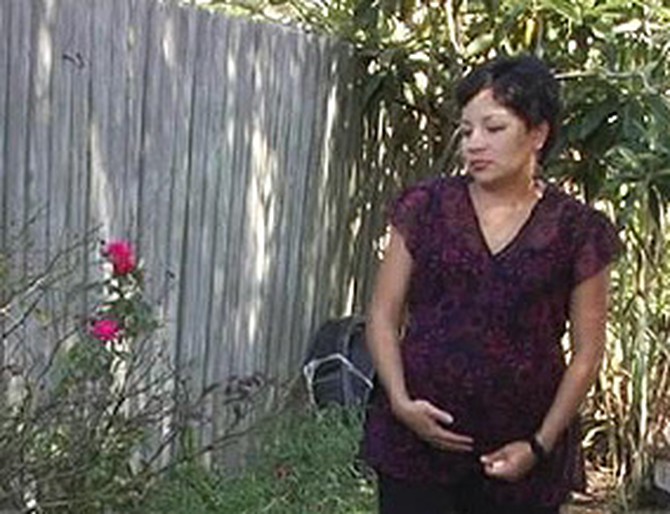
Oprah Show correspondent Lisa Ling visits Central City, the part of New Orleans that police say is the most dangerous and crime-ridden section of town. Lisa reports that many residents say the crime rate dropped in New Orleans just after the storm, as people banded together in an effort to rebuild. But one year later, she says, many criminals moved back to the city—multiplying the incidence of murders and other crimes.
The Mejia family suffered the devastating effects of this influx of crime. In the summer of 2007, 29-year-old Pablo Mejia was working for his father's construction company to rebuild a home destroyed by the hurricane when the unthinkable happened. Three robbers burst into the house and one of them shot Pablo in the head.
Before he was shot, Pablo had called his wife, Luisa. A half-hour later, she was with him in the hospital. "I wanted him to wake up, and I started saying, 'Wake up. It's me,' and he didn't wake up," she says. "I thought he was still alive. I didn't know he was already dead."
When Pablo was killed, Luisa was just weeks away from delivering their first child, a girl she plans to name Mariana. "Her dad was murdered a month and a half before she was born," Luisa says. "So now she has to be born with a destiny that she didn't deserve." Pablo's murder remains unsolved.
The Mejia family suffered the devastating effects of this influx of crime. In the summer of 2007, 29-year-old Pablo Mejia was working for his father's construction company to rebuild a home destroyed by the hurricane when the unthinkable happened. Three robbers burst into the house and one of them shot Pablo in the head.
Before he was shot, Pablo had called his wife, Luisa. A half-hour later, she was with him in the hospital. "I wanted him to wake up, and I started saying, 'Wake up. It's me,' and he didn't wake up," she says. "I thought he was still alive. I didn't know he was already dead."
When Pablo was killed, Luisa was just weeks away from delivering their first child, a girl she plans to name Mariana. "Her dad was murdered a month and a half before she was born," Luisa says. "So now she has to be born with a destiny that she didn't deserve." Pablo's murder remains unsolved.
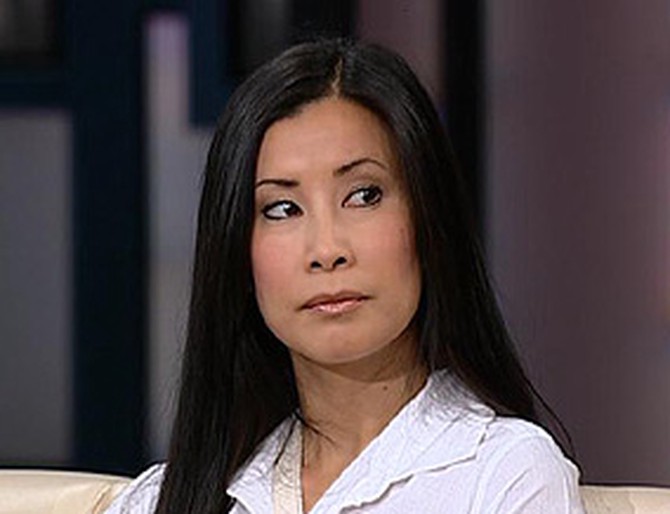
Like many other organizations in New Orleans, Lisa says the police do not have enough resources to combat the crime wave. While the city did have crime before Hurricane Katrina, Lisa says that with the depleted population, the amount of violent crime per capita actually rose after the storm.
Anderson says that in addition to the lack of police resources—such as crime labs—many residents of the crime-ridden, inner-city areas do not report crimes to police. "There is a culture of silence. The people are afraid to come forward," he says.
While there is a lot of violent crime concentrated in certain areas of the city, Lisa says this should not dissuade tourists from visiting. Lisa says places like the French Quarter and other popular areas are still safe to visit. Anderson agrees. "It's a great place to visit. The Mississippi Gulf Coast, the casinos are back," he says. "You can go on vacation there. The best restaurants in the country are there. You can have amazing nights there."
Anderson says that in addition to the lack of police resources—such as crime labs—many residents of the crime-ridden, inner-city areas do not report crimes to police. "There is a culture of silence. The people are afraid to come forward," he says.
While there is a lot of violent crime concentrated in certain areas of the city, Lisa says this should not dissuade tourists from visiting. Lisa says places like the French Quarter and other popular areas are still safe to visit. Anderson agrees. "It's a great place to visit. The Mississippi Gulf Coast, the casinos are back," he says. "You can go on vacation there. The best restaurants in the country are there. You can have amazing nights there."
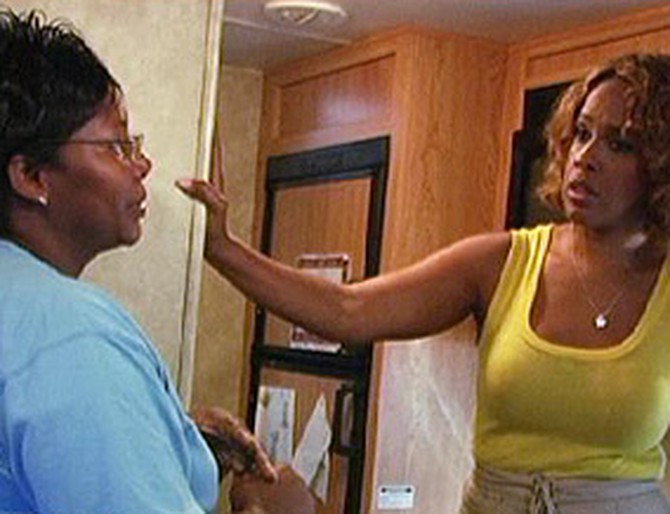
To see what Katrina survivors deal with on a daily basis, Gayle King visits a family of six living in New Orleans's Ninth Ward.
Tanya, her husband Joe and their four children have been living in FEMA trailers for more than a year. Joe and Larry, their 16-year-old son, sleep in one trailer, while Tanya and the three youngest children share a double bed in a neighboring trailer. "When we came back in July, we really expected to be in our home by October of [2006]," Tanya says. "And we're still here."
Some days, Tanya says a terrible smell fills their cramped living quarters. "When you flush the toilet, it smells," she says. "It makes the whole trailer smell."
Ten-year-old Kendell describes the trailer as "mushed and crowded and uncomfortable."
The Lewis-Robertson family was approved for financial assistance to rebuild their home a year ago, but say they still haven't received a dime. Now, Tanya says FEMA is making them move out of their trailers by the end of the month.
Joe works two jobs, seven days a week, but with no money in the bank, they literally have nowhere to go. "I just have to keep plugging away, and plugging away," Joe says. "I can't give up and get tired."
Tanya, her husband Joe and their four children have been living in FEMA trailers for more than a year. Joe and Larry, their 16-year-old son, sleep in one trailer, while Tanya and the three youngest children share a double bed in a neighboring trailer. "When we came back in July, we really expected to be in our home by October of [2006]," Tanya says. "And we're still here."
Some days, Tanya says a terrible smell fills their cramped living quarters. "When you flush the toilet, it smells," she says. "It makes the whole trailer smell."
Ten-year-old Kendell describes the trailer as "mushed and crowded and uncomfortable."
The Lewis-Robertson family was approved for financial assistance to rebuild their home a year ago, but say they still haven't received a dime. Now, Tanya says FEMA is making them move out of their trailers by the end of the month.
Joe works two jobs, seven days a week, but with no money in the bank, they literally have nowhere to go. "I just have to keep plugging away, and plugging away," Joe says. "I can't give up and get tired."
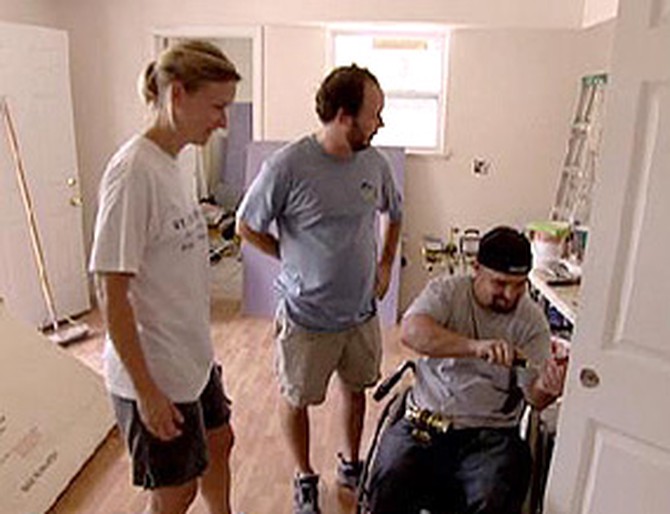
Anderson Cooper says that if New Orleans stands a chance at rebuilding, the city will have the 1 million volunteers who have streamed into the city to thank. Two of these volunteers are former teacher Liz McCartney and lawyer Zack Rosenberg, who left their lives in Washington, D.C., to help Hurricane Katrina victims.
Liz and Zack created the St. Bernard Project to help rebuild houses in the St. Bernard Parish neighborhood of New Orleans. The pair has found a way to rebuild homes there for just $10,000 apiece—about $40,000 less than FEMA says it pays for a trailer.
Depending on the number of volunteers, Liz says they can finish a house in eight to 12 weeks. By August 2007, 69 families had already moved into new homes.
A single father with disabilities named Joe and his two children are slated to receive one of the houses. "Zack and Liz, they're like angels or something," he says.
Liz and Zack created the St. Bernard Project to help rebuild houses in the St. Bernard Parish neighborhood of New Orleans. The pair has found a way to rebuild homes there for just $10,000 apiece—about $40,000 less than FEMA says it pays for a trailer.
Depending on the number of volunteers, Liz says they can finish a house in eight to 12 weeks. By August 2007, 69 families had already moved into new homes.
A single father with disabilities named Joe and his two children are slated to receive one of the houses. "Zack and Liz, they're like angels or something," he says.
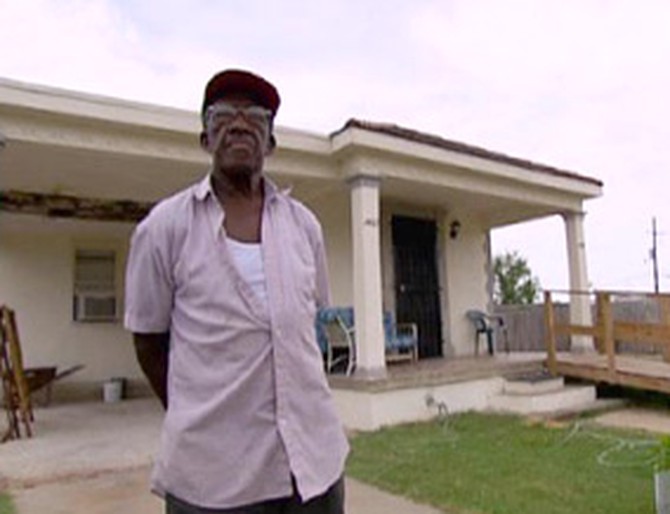
Herbert Gettridge and his wife lived in the Lower Ninth Ward for nearly 50 years before Hurricane Katrina struck. Determined to rebuild, Herbert moved back into his severely damaged home. At the time, Herbert says the neighborhood was empty—except for the mice, rats and bugs. "I was back here with no water, no gas, no electricity," he says. "Just mosquitoes."
Persevering through sweltering heat, rain and even a robbery, 84-year-old Herbert says he never thought of giving up. He worked hard to finish the house so his wife, Lydia, could return to their beloved neighborhood. "This is home," Herbert says. "Home sweet home."
Persevering through sweltering heat, rain and even a robbery, 84-year-old Herbert says he never thought of giving up. He worked hard to finish the house so his wife, Lydia, could return to their beloved neighborhood. "This is home," Herbert says. "Home sweet home."
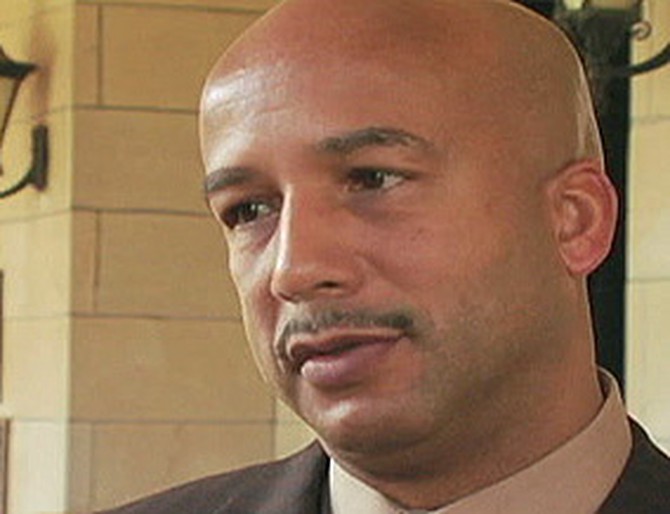
After hearing about the hardships facing Katrina survivors, many Americans may wonder what it will take to get the Gulf Coast back on track. Gayle King met with New Orleans Mayor Ray Nagin to get some answers.
"I'm the last man standing," he says. "People expect me to do miracles, and I can do that, but I need some resources to get the job done."
Watch Gayle's interview with Mayor Nagin.
If you want to help make a difference in the lives of Hurricane Katrina survivors, make a donation to Oprah's Angel Network today.
To date, Oprah's Angel Network has raised more than $15 million in response to hurricanes Katrina and Rita, which has helped rebuild homes and communities in four Gulf region states. The Angel Network continues to fund recovery and redevelopment projects for those areas affected by the storms.
"I'm the last man standing," he says. "People expect me to do miracles, and I can do that, but I need some resources to get the job done."
Watch Gayle's interview with Mayor Nagin.
If you want to help make a difference in the lives of Hurricane Katrina survivors, make a donation to Oprah's Angel Network today.
To date, Oprah's Angel Network has raised more than $15 million in response to hurricanes Katrina and Rita, which has helped rebuild homes and communities in four Gulf region states. The Angel Network continues to fund recovery and redevelopment projects for those areas affected by the storms.
Published 01/01/2006

